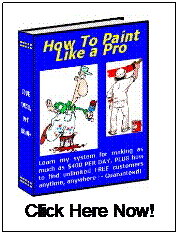|
Painting Wood – How to Do It The Professional Way
Painting wood is an art when it is in the form of woodwork (windows, doors and trim). Exterior siding and trim count also. Here is how to paint interior (wood) woodwork like a pro. New windows, doors and trim – I have painted and stained enough of them to know all the steps for making them look really good. I have painted brand new windows and slider units like Pella and Anderson and a few other brands. They are a bit painstaking but easy to do when you know the steps and have the right tools handy. Staining is easier than painting them. I will tell you the best way and easiest way to do both since staining is a form of painting wood. When painting new wood it is going to take 3 coats. First the bare wood has to be primed. I use an enamel under coater type of primer. You can use oil base or latex. Make sure the latex version is also “stain blocking”. Once primed I do a light sand using 220-grit sandpaper. Then I apply a topcoat of enamel over the smooth sanded primer. I like to use a satin sheen. Benjamin Moore has a great latex enamel made from their famous “Satin Impervo”. The original formula is an oil base formula. Both are still available. Once the first enamel coat of paint dries (for at least 4 hours), give it a light sand with 220-grit once again. Now topcoat with the enamel paint one more time. Use a 2-inch angular tip brush for best results on all 3 coats when painting woodwork, doors and trim. Tools To Use The JUMBO-KOTER® FRAME and the JUMBO-KOTER® PRO/DOO-Z®.This is a min-roller and mini roller covers made by Wooster. The roller covers are shed-resistant and made for enamels. On the job site we use these painting tools to finish larger areas like doors, cupboard doors, shelving, etc,. You can roll the paint out using the Wooster mini-roller system (JUMBO-KOTER) and brush it in quickly using your paintbrush. I use a two-inch angular tip paintbrush. Wooster has excellent brushes also. You will also want a bucket you can both paint and roll out of. Wooster has one that has a magnetic brush holder and a place for your roller called the “Pelican”. See Wooster online for all these tools. Staining Wood To stain the wood I use an oil base stain. Don’t sand anything. The wood won’t accept the stain as well and will cause light spots if you do. Once a window or door is stained, let it dry overnight. Follow the instructions on the can for applying the stain. The next day, brush on a coat of quick-drying clear lacquer. After about 20 minutes fill the nail holes with a wood putty that matches the stain. Wipe it flush with a rag that is damp with mineral spirits. Now you can apply one more coat of quick-dry clear lacquer and you are done. Use a satin sheen for best results. Now put your hardware back on the window or door that you stained and you are done. Exterior wood – prime with an oil base primer and top coat with latex paint. Or if you want the natural look use an oil base semi-transparent stain. Previously painted wood – if the paint is sound, lightly sand the surface and prime with an enamel under coater. Let dry for an hour and top coat with either an oil base or a latex enamel. Previously stained wood – lightly sand with 220-grit to remove the old varnish. Use a gel stain to restore the look (follow directions on back of can for use). Let dry overnight and then use a clear lacquer. It can be the quick dry or the regular type of lacquer. That’s it for painting wood. Did you find this article helpful for painting wood? Click here for more related info.
|






